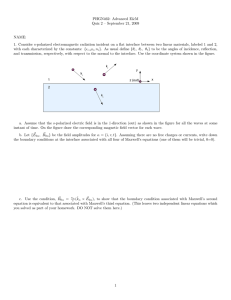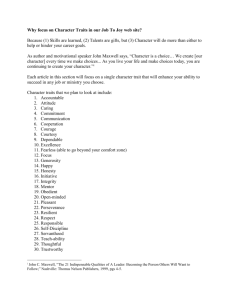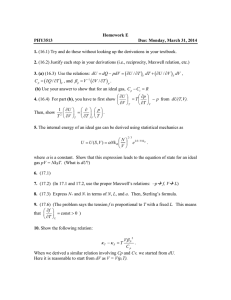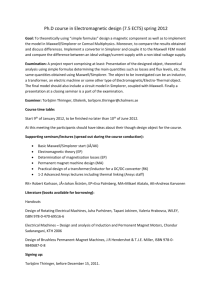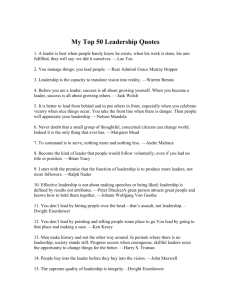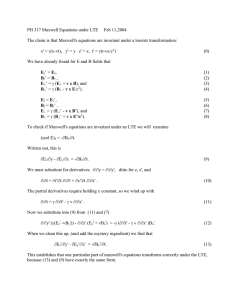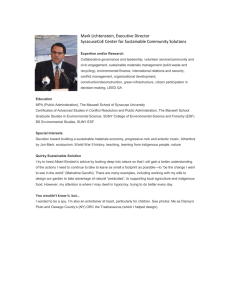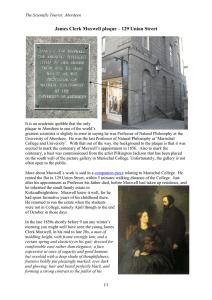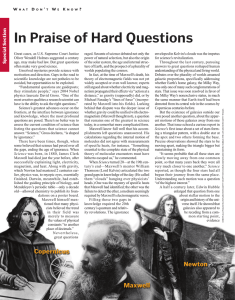Document 13389335
advertisement
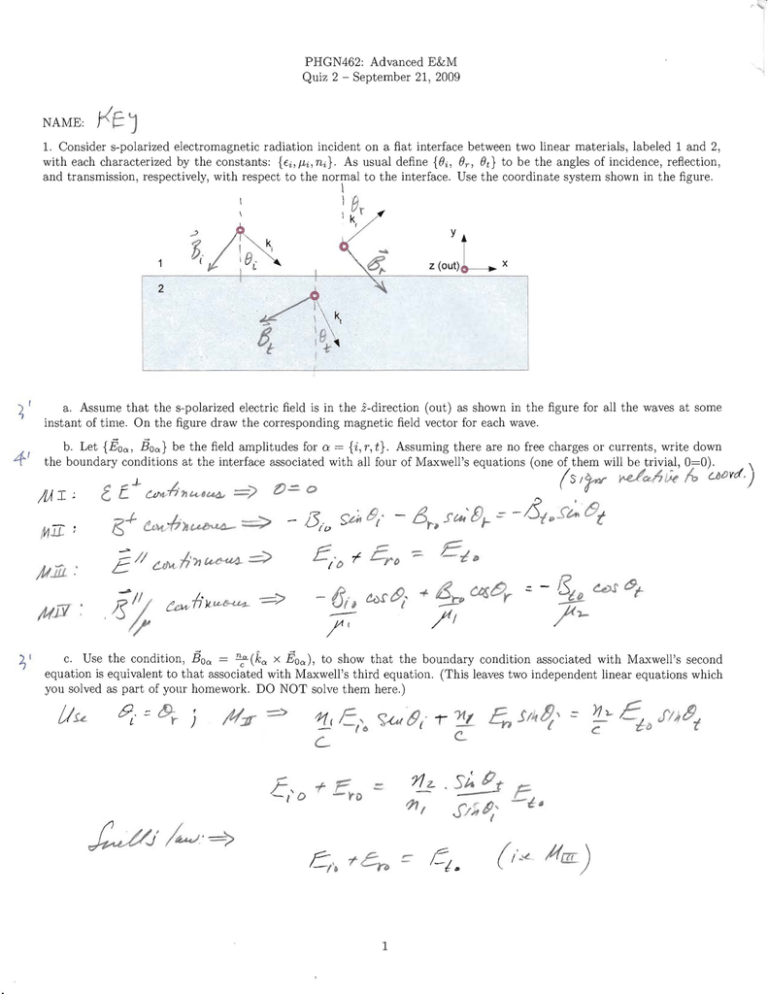
PHGN462: Advanced E&M
Quiz 2 - September 21, 2009
NAME:
YEl
1. Consider s-polarized electromagnetic radiation incident on a flat interface between two linear materials, labeled 1 and 2,
with each characterized by the constants: {€i,J1i,nd. As usual define {Oi, Or, 0d to be the angles of incidence, reflection,
and transmission, respectively, with respect to the normal to the interface. Use the coordinate system shown in the figure.
\
1
\
e
I k 'r
~
r
y
z (out)
x
2
~
I
4'
a. Assume that the s-polarized electric field is in the z-direction (out) as shown in the figure for all the waves at some
instant of time. On the figure draw the corresponding magnetic field vector for each wave.
b. Let {Eoa , BOa} be the field amplitudes for 0: = {i,r,t}. Assuming there are no free charges or currents, write down
the boundary conditions at the interface associated with all four of Maxwell's equations (one of them will be trivial, 0=0).
)
/~ ~CLh' It, u;t)vcI,
If) I ;
Cffit.-h' " J.,v~U4" .-;::> t).= 0
. if'­
(s
G E..J.
6..(.. ~.IJ'JfCdN4-
>
Ii II C-.rM-1/'n~ ==>
~
I
D/v ~~.
~'tJ
-f
-
6r-, SU4'fJ~
=
-!5i
p
S'btI 8 t
ErD ~ E i ~
c. Use the condition, BOa
~(ka X EOa )' to show that the boundary condition associated with Maxwell's second
equation is equivalent to that associated with Maxwell's third equation. (This leaves two independent linear equations which
you solved as part of your homework. DO NOT solve them here.)
9,:; &
l
1
r-}
~'/ew., ~
1
